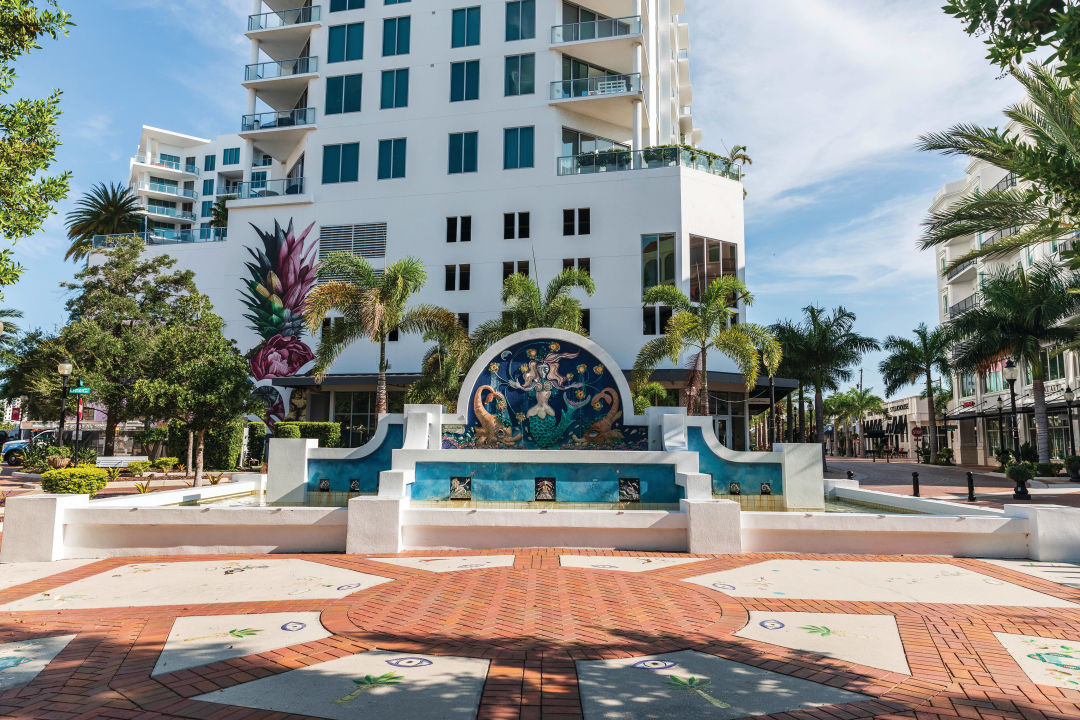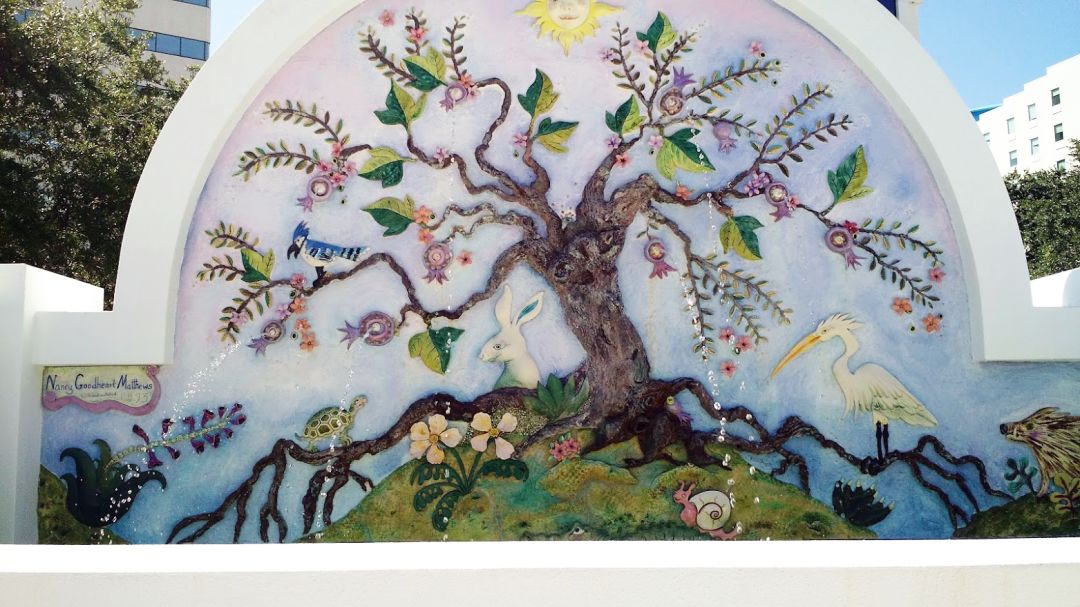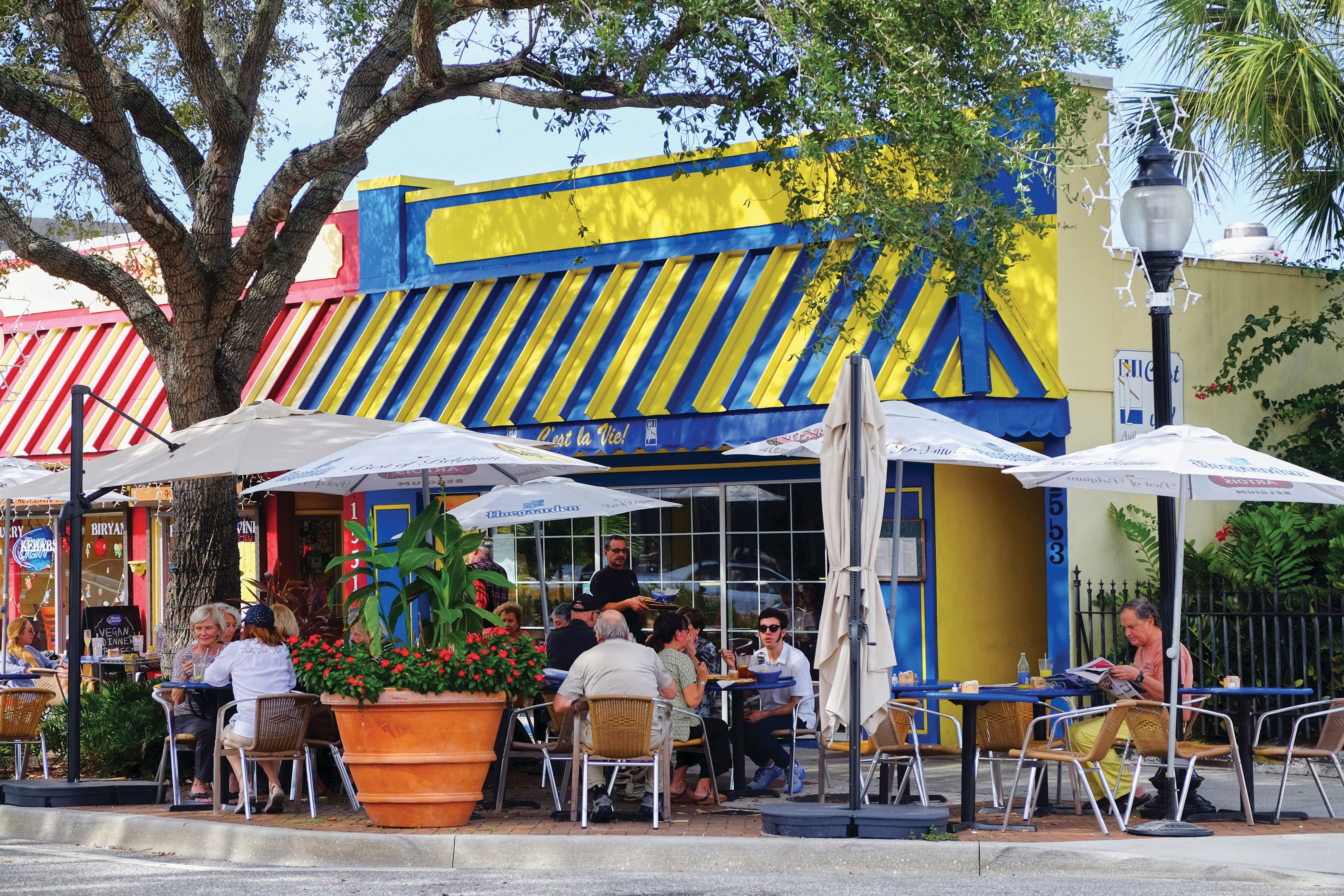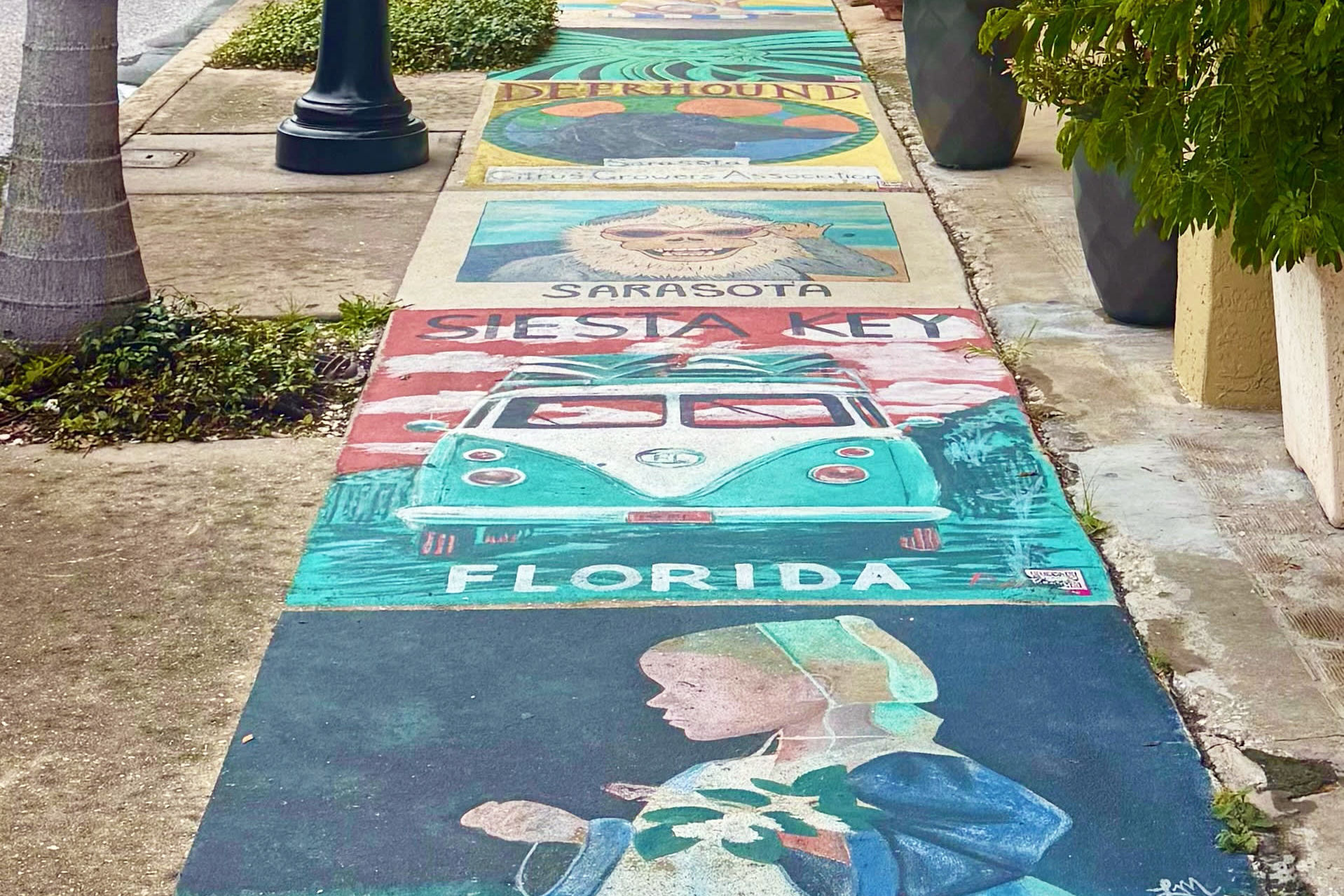Meet the Woman Behind Downtown Sarasota’s Mermaid Fountain

Image: Hannah Trombly
It doesn’t matter how long you’ve lived in Sarasota—if you’ve walked around downtown, you’ve come across the mermaid fountain in Paul N. Thorpe Jr. Park at the intersection of Pineapple and Lemon avenues. But did you know it's included on the Smithsonian Institution's registry of public art?
Originally known as Good Heart Place and now officially titled L’Aria Della Figlia Muta (“Song of the Silent Daughter”), the fountain was created by artist Nancy Goodheart Matthews. Matthews is known for her architectural carvings, which are made by applying ceramics to the exteriors of buildings. For more than 40 years, commissions from clients took her all over the world, but her career kicked into high gear when Carl Abbott, one of the founding members of the Sarasota School of Architecture, asked Matthews to design a doorbell for his new home.
“Carl was friends with my husband [Turner Matthews], and I designed a doorbell that was a dragon," recalls Matthews, now 73. "You had to reach into its mouth to press the bell. He liked it a lot, and a lot of people saw it, so that’s how I began doing commissions. It’s an amazing energy exchange, to want to make something and have someone hire you to do so.”
Matthews didn’t set out to be an artist. A native of the Virgin Islands, she started drawing at age 17, after her mother passed away. “I think that was connected to her,” she says. “[My drawings] came out like a fountain, and I just never stopped.”
She went on to attend the New York's School of Visual Arts between 1969 and 1971, then received a grant from the government of the Virgin Islands to attend the San Francisco Art Institute from 1973 to 1975, where she studied printmaking and ceramic sculpture and began working with clay.
“It hit me like a ton of bricks” in a good way, she says of discovering clay. “I’ve never really gone back. It’s an intimate material. We have examples of it from centuries ago where the artists’ fingerprints are still on the pottery.”
“Self-expression is so important,” she continues. “Art is its own language. It’s direct—it gets into your head without the intellect blocking it.”
After San Francisco, she landed in Bradenton, where her brother had settled. There, she met his friend Turner Mathews, to whom she was married from 1976 until his death in 2013. Building on the word-of-mouth commissions that began after the completion of her project for Abbott, she showed her work at Allyn Gallup Gallery, The Ringling, The Bishop and St. Petersburg's Craftsman House Gallery.

Image: Courtesy Photo
In 1993, the City of Sarasota asked Matthews if she would create a piece of public art—her first—in downtown Sarasota, and the mermaid fountain was born. The fountain is comprised of multiple pools with bas-relief imagery on either side. On the south-facing panel, a mermaid is flanked by dolphins, with a moon shining overhead. On the north-facing side is the Tree of Life, surrounded by carvings of native Florida animals, plants and birds. Thirty additional panels feature small vignettes, and a large clay octopus and lobster swim in the pool basins, along with a compass rose.
While the elements seem to make sense for Sarasota’s tropical coastal location, Matthews says there’s more to the design than meets the eye.
“I studied Carl Jung’s work on archetypes,” she says. “One side, with the Tree of Life, is the male side, with archetypal symbols like the sun and the earth. The female side is the mermaid, with underwater imagery, the moon and the ocean. Together it makes up a whole, and the compass rose in the bottom of the pool grounds it and orients it onto the globe.”
Over the years, the fountain fell into disrepair, and in 2017, the city invested roughly $150,000 into restoring it. Matthews and artist Danielle Glaysher-Cobian were tasked with repainting it, filling in cracks, removing calcium deposits and replacing the marcite that lined the pools. To do so, the fountain’s original 10-foot lobster had to be removed, requiring Matthews to build a whole new one.
A Q.R. code on a sign near the fountain now allows people to hear an oral history about the project recorded by Matthews, and the city is planning to celebrate the Smithsonian's decision to include it in its registry of public art sculptures with a public commemoration at 7:30 p.m. on Friday, Sept. 13. Matthews will speak at the event alongside city officials and community leaders.

Image: Courtesy Photo
“We’re happy to see L’Aria Della Figulia Muta receive the recognition it deserves from the Smithsonian Institution,” says City of Sarasota public art manager Mary Davis Wallace. “The honor is a testament to Nancy’s talent and the lasting impact of her work, which has not only beautified our city, but become an integral part of Sarasota’s cultural and artistic identity.”
Matthews isn’t working on large-scale commissions anymore—"my scaffolding days are over!” she says with a laugh—but she is still creating artwork on a smaller scale, like jewelry, dolls and mosaics. And she looks back fondly on the big pieces she’s created over her career, including the mermaid fountain.
“Because the fountain is public, it has a life of its own,” she says. “I get stories from people who have gotten married there, met on dates there for the first time, who go there to feel better when they’re depressed, who play instruments there. It’s important to so many different people. I feel like it’s working the way I hoped it would—that people would respond to it from many walks of life.”



